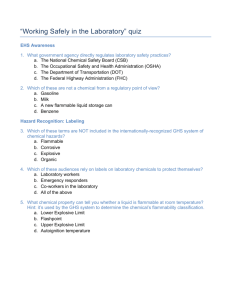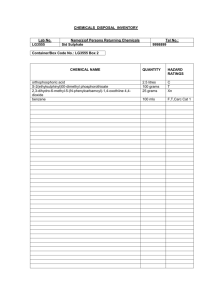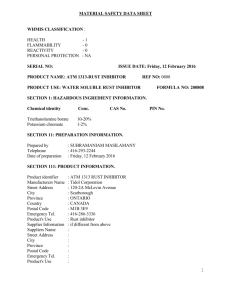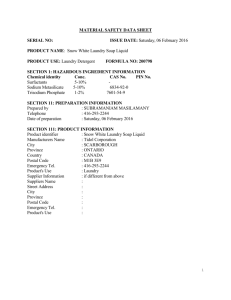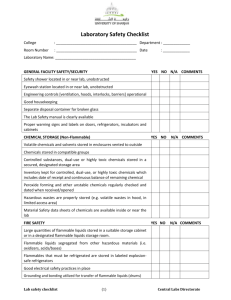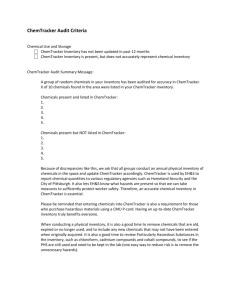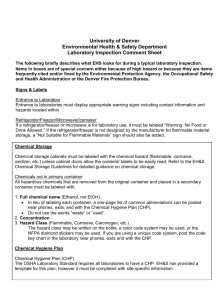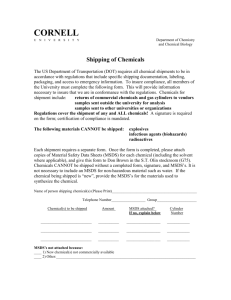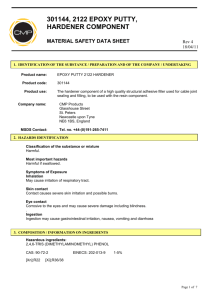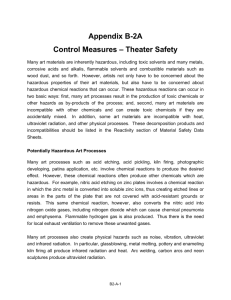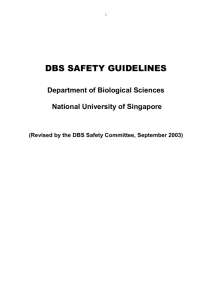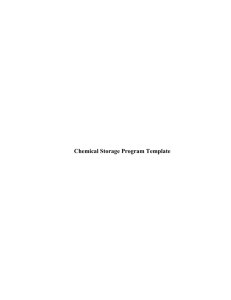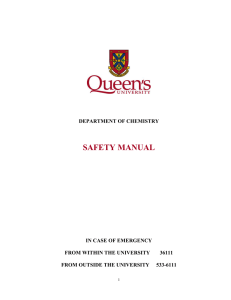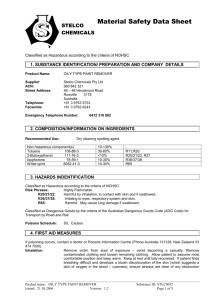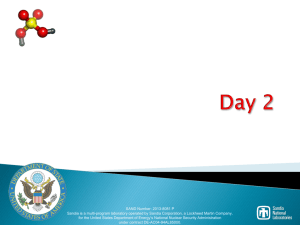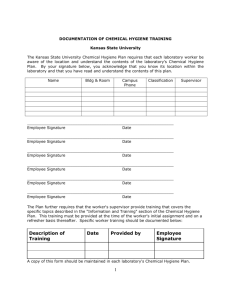Word - Department of Environmental Safety
advertisement
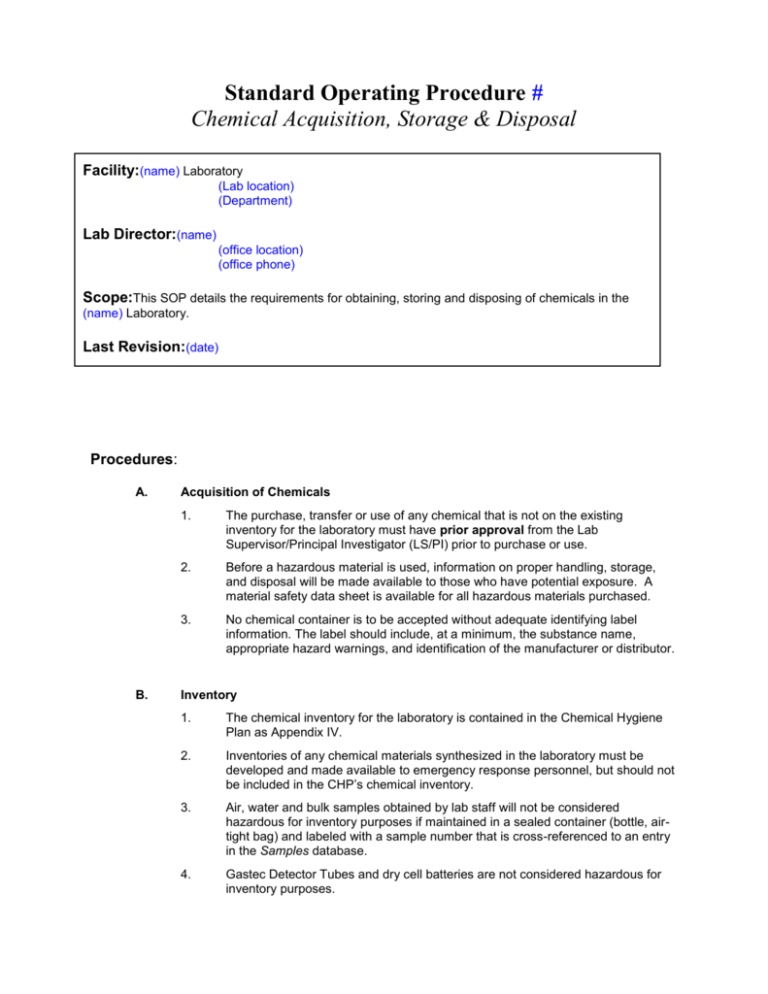
Standard Operating Procedure # Chemical Acquisition, Storage & Disposal Facility:(name) Laboratory (Lab location) (Department) Lab Director:(name) (office location) (office phone) Scope:This SOP details the requirements for obtaining, storing and disposing of chemicals in the (name) Laboratory. Last Revision:(date) Procedures: A. B. Acquisition of Chemicals 1. The purchase, transfer or use of any chemical that is not on the existing inventory for the laboratory must have prior approval from the Lab Supervisor/Principal Investigator (LS/PI) prior to purchase or use. 2. Before a hazardous material is used, information on proper handling, storage, and disposal will be made available to those who have potential exposure. A material safety data sheet is available for all hazardous materials purchased. 3. No chemical container is to be accepted without adequate identifying label information. The label should include, at a minimum, the substance name, appropriate hazard warnings, and identification of the manufacturer or distributor. Inventory 1. The chemical inventory for the laboratory is contained in the Chemical Hygiene Plan as Appendix IV. 2. Inventories of any chemical materials synthesized in the laboratory must be developed and made available to emergency response personnel, but should not be included in the CHP’s chemical inventory. 3. Air, water and bulk samples obtained by lab staff will not be considered hazardous for inventory purposes if maintained in a sealed container (bottle, airtight bag) and labeled with a sample number that is cross-referenced to an entry in the Samples database. 4. Gastec Detector Tubes and dry cell batteries are not considered hazardous for inventory purposes. Chemical SOP # Page 2 C. Storage 1. Both the storage and working amounts of hazardous chemicals will be kept to a minimum. 2. All chemical containers must have a legible and firmly attached label. Containers of peroxidizable chemicals (dioxane, THF, ethyl ether, etc.) will be dated when received and also when opened. 3. Chemicals shall be stored in compatible containers which will be kept closed when not in use. 4. Periodic inventories will be conducted by the LS/PI and unneeded items will be identified/discarded, returned to storage or processed for hazardous waste disposal. 5. Storage of flammable/combustible liquids in excess of 10 gallons must be in an approved flammable materials cabinet. Lab personnel are to notify the LS/PI is flammable/combustible volume exceeds 10 gallons. 6. The lab refrigerator is not an acceptable storage location for flammable or combustible liquids. Refrigerators/freezers used for flammable chemical storage must be specifically approved for such use. 7. Compressed gas cylinders must be secured at all times with the straps attached to the bench. The LS/PI is the only person authorized to connect, disconnect, or transport gas cylinders for the IAQ Monitor Test Bench.. 8. Incompatible chemicals must be segregated by class. (Identify storage strategy and storage locations. Example: Flammable Solvents: Alcohols, ketones and alkanes will be stored in flammables cabinet #1. Alkenes, ethers and aromatics will be stored in flammables cabinet #2. Mineral acids will be stored in the corrosives storage cabinet beneath the chemical fume hood. Oxidizers will be stored in the corrosives cabinet next to the fume hood. Miscellaneous salts will be stored on the shelves along the west wall in alphabetical order. D. Disposal 1. Each person working in the laboratory has a responsibility to see that wastes are properly packaged and disposed. 2. All lab staff processing chemicals for waste disposal must receive annual training coordinated by DES - Environmental Affairs. 3. The laboratory's routine waste streams are as follows: 4. a. nickel-cadmium & metal hydride batteries b. expired calibration gases The sanitary drain will not be used for disposal of chemicals unless prior Chemical SOP # Page 3 approval is obtained from the lab director. 5. Broken glassware will be placed in a rigid cardboard box which will be taped closed and placed directly in the building’s dumpster.

